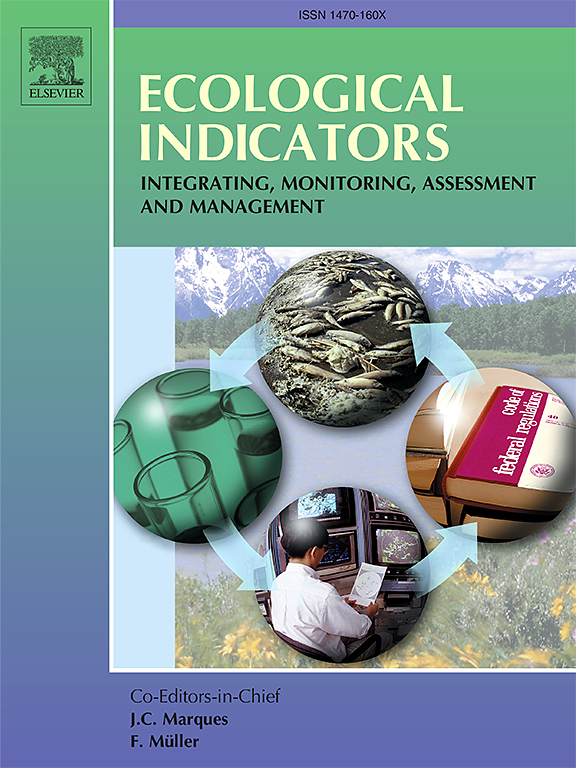在意大利南部塔兰托实施3-30-300绿化规则对死亡率的影响
IF 7
2区 环境科学与生态学
Q1 ENVIRONMENTAL SCIENCES
引用次数: 0
摘要
“3-30-300”规则提倡在社区中30%的树冠覆盖率,没有人住在距离绿地300米以上的地方。这项健康影响评估研究评估了在意大利南部工业化地区塔兰托实施这项政策将如何降低成人死亡率。人口加权暴露使用2020年人口数据和2022年距离家庭300米以内的10米分辨率卫星数据计算。该研究得出了一个归一化植被指数(NDVI)目标,对应于30%的树木覆盖率,以及10%至25%的中期目标。不确定性分析是基于10万次蒙特卡罗模拟。2022年的结果估计,目前只有1.4%的人口实现了30%的树木覆盖率目标,估计NDVI为0.33(95%置信区间:0.32-0.33),可防止123人(93-155)死亡和1,246人(929-1,563)年寿命损失,将死亡率降低5.3%(3.9% - 6.6%)。三覆盖物、灌木地、草地和农田与较高的NDVI相关,而建成区和贫困地区与较低的绿化率相关。本文章由计算机程序翻译,如有差异,请以英文原文为准。
The mortality impacts of implementing the 3-30-300 greenness rule in Taranto, Southern Italy
The '3-30-300' rule advocates for 30 % tree canopy cover in neighborhoods, with no one living more than 300 m from green space. This health impact assessment study evaluated how implementing this policy could reduce adult mortality in Taranto, an industrialized area in Southern Italy. Population-weighted exposures were calculated using 2020 population data, and 2022 satellite data at 10-meter resolution within 300 m from homes. The study derived a normalized difference vegetation index (NDVI) target corresponding to a 30 % tree-cover, and to interim targets from 10 % to 25 %. The uncertainty analysis was based on 100,000 Monte-Carlo simulations. The results for 2022 estimated that achieving the 30 % tree-cover target, currently achieved by only 1.4 % of the population and corresponding to an estimated NDVI of 0.33 (95 % confidence interval: 0.32–0.33), could prevent 123 (93–155) deaths and 1,246 (929–1,563) years of life lost, reducing mortality by 5.3 % (3.9–6.6 %). Three-cover, shrubland, grassland and cropland were associated with higher NDVI, while built-up areas and deprivation were linked to lower greenness.
求助全文
通过发布文献求助,成功后即可免费获取论文全文。
去求助
来源期刊

Ecological Indicators
环境科学-环境科学
CiteScore
11.80
自引率
8.70%
发文量
1163
审稿时长
78 days
期刊介绍:
The ultimate aim of Ecological Indicators is to integrate the monitoring and assessment of ecological and environmental indicators with management practices. The journal provides a forum for the discussion of the applied scientific development and review of traditional indicator approaches as well as for theoretical, modelling and quantitative applications such as index development. Research into the following areas will be published.
• All aspects of ecological and environmental indicators and indices.
• New indicators, and new approaches and methods for indicator development, testing and use.
• Development and modelling of indices, e.g. application of indicator suites across multiple scales and resources.
• Analysis and research of resource, system- and scale-specific indicators.
• Methods for integration of social and other valuation metrics for the production of scientifically rigorous and politically-relevant assessments using indicator-based monitoring and assessment programs.
• How research indicators can be transformed into direct application for management purposes.
• Broader assessment objectives and methods, e.g. biodiversity, biological integrity, and sustainability, through the use of indicators.
• Resource-specific indicators such as landscape, agroecosystems, forests, wetlands, etc.
 求助内容:
求助内容: 应助结果提醒方式:
应助结果提醒方式:


